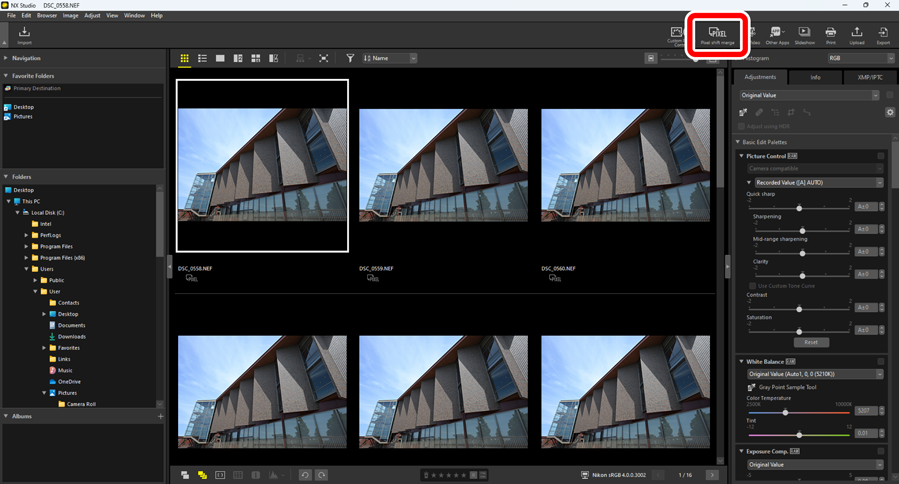What Is “Pixel Shift”?
Pixel shift allows you to take multiple pictures while shifting the camera's image sensor by a single pixel or less and to merge them to generate a higher-resolution image than that which can be obtained through normal single-frame shooting.
How Pixel Shift Works
The Bayer image sensor installed in general cameras including Nikon cameras can only capture one type of color information (R, G, or B) per pixel. When displaying in RGB, the remaining colors must be interpolated from the surrounding pixels. In the following example, color information is captured in the ratio of R:1, G:2, and B:1, and each RGB channel captures the color information of the remaining pixels through the interpolation process.

In pixel shift shooting, taking multiple pictures while shifting the image sensor by one pixel unit allows G or B to be captured at the pixel location where R was captured. Since RGB can be overlapped without interpolation, moiré, and color fringing caused by the interpolation process can be reduced, improving color reproducibility in the details.

The image sensor can also be shifted by units smaller than a single pixel. Since the camera captures more detailed information, higher-resolution images than those captured by shifting one pixel unit can be generated. Nikon cameras can shift the image sensor by 0.5 pixels.

Pictures taken with the pixel shift shooting function can be merged into a single, high-resolution image with Nikon's NX Studio software. Noise can also be averaged and reduced by merging multiple images.

Images and Illustrations
The images and illustrations in this document are for expository purposes only.
